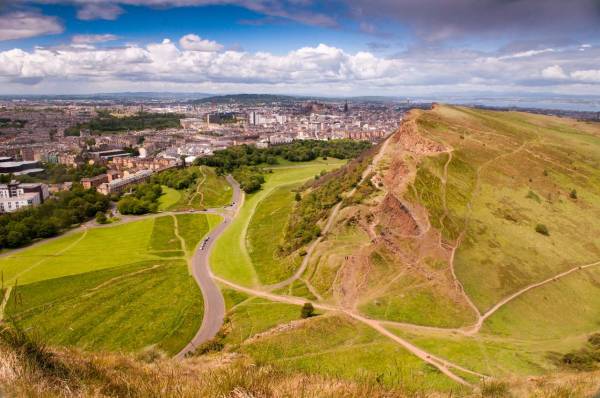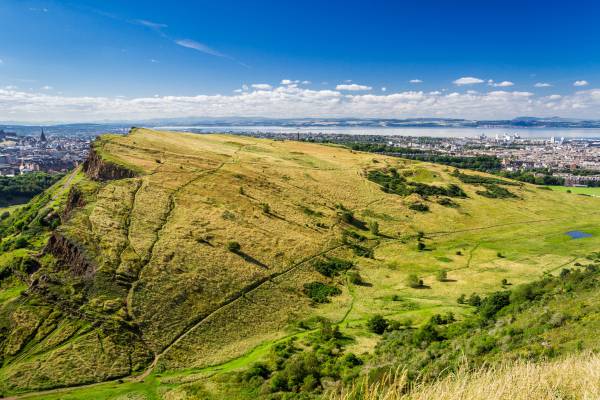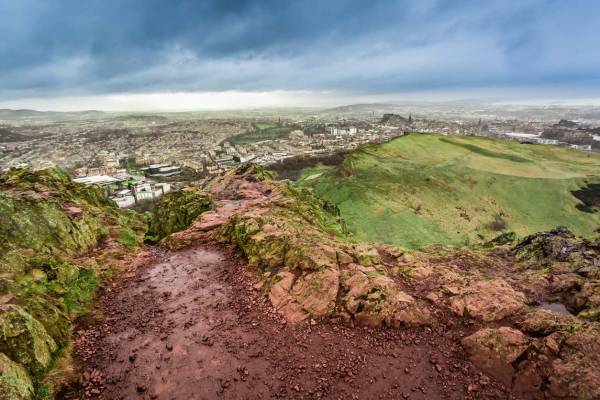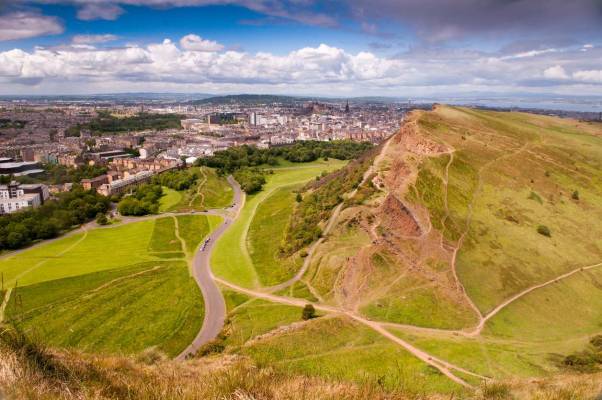
Edinburgh, Arthur’s Seat and the Legend of the Sleeping Dragon

Behind one of Scotland’s most breath-taking landmarks is an equally enchanting story
Scotland’s capital is known for its enticing mixture of history and mystery, and when you delve into its incredible and varied past it’s easy to see why.
The heartfelt story of Greyfriar’s Bobby — the loveable Skye Terrier who sat at his master’s graveside in Greyfriar’s Kirkyard for years after his death — is one of the city’s best known and most beloved stories. But there are endless other tales surrounding the city, some hilarious, some heart-warming and some downright spooky. Take Burke and Hare for example, the famous body-snatching murderers of the 1820s, or Half Hangit Maggie: the 18th century fish hawker who miraculously survived a hanging.
The city once also served as the home of J K Rowling while she was cooking up the global phenomenon that is the Harry Potter universe. She took aspects of Edinburgh’s magical atmosphere and transformed them into truly bewitching settings for Harry’s adventures. You can even find a gravestone belonging to a Thomas Riddle (the true name of the infamous Lord Voldemort) resting in the same graveyard as Greyfriar’s Bobby!
But there is one site in Edinburgh with a whole host of tales and legends surrounding it, and that’s Arthur’s Seat. So just what is Arthur’s Seat, and what are some of the fascinating stories behind it?
Arthur’s Seat
Arthur’s Seat is one of Edinburgh’s most popular tourist attractions, with thousands of locals and tourists alike tackling the peak every year whatever the weather.
The site itself isn’t so much a seat as an impressive rock formation. Arthur’s Seat is actually part of a volcano, which overlooks the city of Edinburgh. Thankfully, the volcano is extinct, having first erupted around 350 million years ago and since eroded and glaciated to its current size. Despite the fact that the whole range of volcanic hills is often referred to as Arthur’s Seat, it’s actually just the largest peak that was originally given this name.
Some people also refer to the landmark as the Lion’s Head. This is due to the fact that from certain angles the range resembles a crouching king of the jungle ready to pounce.
The site is situated in the south-east of the city, to the east of the Royal Mile and overlooking Holyrood Park. However, you can feel its awe-inspiring presence from anywhere in the city due to its huge 823 feet high peak. This allows Arthur’s Seat to boast some of the most amazing 360-degree views for miles round. This, combined with its conveniently central location, makes Arthur’s Seat one of Scotland’s most popular hiking trails among tourists. For people visiting Edinburgh for the first time, there’s no better way to get your bearings than to gaze down at Edinburgh’s streets and landmarks from this picturesque peak.
Perhaps the most enthralling thing about Arthur’s Seat is its role in so many of the myths and legends that surround Edinburgh. Having been woven into Scottish folklore there are a great many tales for both locals and tourists to learn about.
From magical creatures to soaring arrows and legendary warriors, you don’t need Game of Thrones to get you fix of dragons — simply visit Scotland’s capital! So take a seat (no pun intended) and enjoy one of the many magical legends about the origins of one of Edinburgh’s most mysterious natural landmarks.
The Legend of the Sleeping Dragon
One of the most fantastical tales of Arthur’s Seat pre-dates even Celtic times. It’s the legend of the sleeping dragon.
According to the legend, the land surrounding Edinburgh was once plagued by a huge ferocious dragon. It would circle the skies, terrifying locals, breathing fire, stealing precious livestock and generally getting up to the dragon-ly mischief. The people of Scotland didn’t know what to do. They were petrified of the beast and could see no way to satisfy its greed. Eventually however, this greed would become the reason for the dragon’s downfall.
Over weeks and months and years, the dragon ate and ate and ate, taking whatever supplies and animals it wanted from the people of Scotland without second thought. The beast became so greedy that it grew fat and slow. No longer the fierce monster it had once been, the dragon’s constant fullness had made it increasingly lazy. One day, it rested on top of a peak just outside the city for a sleep.
Unfortunately for the dragon, it never woke up. Instead, it became the hill we now know as Arthur’s Seat.
This fascinating and entertaining tale is possibly a combination of memories passed down from a time when the volcano was active. It might also be a reference to the shape of the hill — which from certain angles looks like a coiled beast. It’s also in some ways a moral tale, great for teaching children about the dangers of being too greedy.
The impact of this story can be found all over the Scottish capital and beyond, from the names of pubs to the tales told during Edinburgh’s legendary city tours. We’ve already touched on author J K Rowling’s time in Edinburgh, but let’s not forget that the official mantra of Hogwarts School of Witchcraft and Wizardry is “Never Tickle a Sleeping Dragon” — could it be that even Rowling was influenced by the story of the greedy beast?
Over the years, the dragon from the tale has been referred to by many names, but never Arthur. So how did Arthur’s Seat get its name? The answer could lie in other stories surrounding the iconic site.
The other tales behind the Seat
Did King Arthur leave his mark on Edinburgh?
Once you hear this tale, you’ll want it to be true. Some people believe that Arthur’s Seat was once the site of the legendary Camelot: the iconic castle from the adventures of King Arthur.
According to this theory, Arthur and his loyal knights made the Edinburgh outskirts their home. Others think that although the site may not have been the home of Camelot, Arthur and his knights did get to know the land during fearsome battles. Next time you climb the peak of Arthur’s Seat, just think about some of the incredible scenes which might have taken place just a stone’s throw away.
Did arrows once fly over Arthur’s Seat?
Despite being fascinating and entertaining, these tales of dragons and legendary kings might be too hard for some to believe. Historian William Maitland puts forward a more logical theory.
According to Maitland, there isn’t actually an ‘Arthur’ at all. Instead, the inclusion of the name in the site’s title is a prime example of things getting lost in translation. The name, according to Maitland, is a translation of ‘Àrd-na-Said’, which means ‘height of arrows’ in Gaelic. This translation has been watered down and changed over the years, eventually causing confusion about a mysterious ‘Arthur’.
What do you prefer to believe is the source of this historical name?
Discover Edinburgh for yourself and be part of this legendary city with a Quartermile luxury apartment. If you want to live a little closer to all that Scotland’s capital has to offer? Book a viewing today by calling us on 0845 000 2525.




